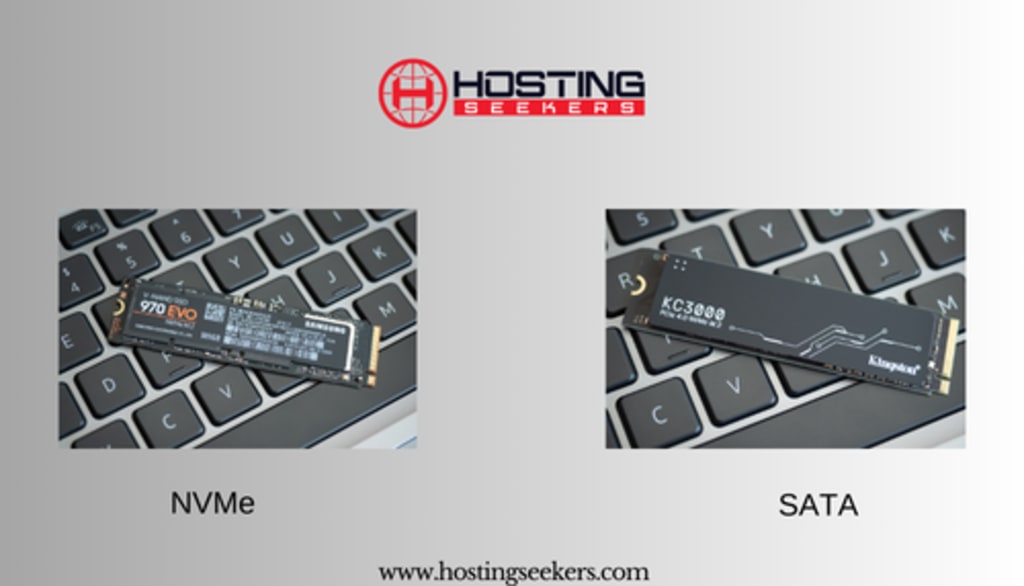NVMe vs. SATA: Understanding the Differences and Choosing the Right Storage
NVM vs. SATA: Choosing the Right Storage for Your Needs

In the world of computer storage, two technologies dominate the landscape: NVMe (Non-Volatile Memory Express) and SATA (Serial ATA). Both are used to connect storage devices like SSDs (Solid State Drives) to a computer, but they offer different performance levels, features, and use cases. Understanding the differences between NVMe and SATA is essential for making an informed decision about which technology best suits your needs.
What is SATA?
Overview: SATA, or Serial ATA, is a long-established interface designed primarily for connecting hard drives and SSDs to a computer’s motherboard. Introduced in the early 2000s, SATA has undergone several iterations, with the most common being SATA III, which offers maximum data transfer speeds of up to 6 Gb/s (750 MB/s).
Key Features of SATA: Widespread Compatibility: SATA interfaces are widely supported across various devices and motherboards, making it a versatile choice for many users.
Cost-Effective: SATA SSDs are generally more affordable than NVMe SSDs, providing a budget-friendly option for upgrading storage.
Adequate Performance for General Use: While not as fast as NVMe, SATA SSDs offer a significant performance boost over traditional hard drives, making them suitable for everyday tasks and moderate workloads.
Limitations of SATA:
Slower Speeds: With maximum data transfer speeds of 6 Gb/s, SATA SSDs are slower compared to NVMe SSDs, which can affect performance in data-intensive applications.
Higher Latency: SATA connections have higher latency compared to NVMe, which can impact the responsiveness of storage operations.
What is NVMe?
Overview
NVMe, or Non-Volatile Memory Express, is a newer storage interface designed specifically for SSDs. It leverages the high-speed PCIe (Peripheral Component Interconnect Express) bus, allowing for significantly faster data transfer speeds and lower latency compared to SATA.
Key Features of NVMe:
Blazing Fast Speeds: NVMe SSDs can achieve data transfer speeds of up to 32 Gb/s (4 GB/s) with PCIe 3.0, and even higher with PCIe 4.0 and 5.0, making them ideal for high-performance computing tasks.
Low Latency: NVMe’s architecture is designed for low latency, providing quicker access to stored data and improving overall system responsiveness.
High IOPS: NVMe SSDs offer superior Input/Output Operations Per Second (IOPS), making them perfect for applications that require rapid data access, such as gaming, video editing, and database management.
Scalability: NVMe supports multiple queues and commands, enhancing its scalability for enterprise environments and high-demand applications.
Limitations of NVMe:
Cost: NVMe SSDs are typically more expensive than their SATA counterparts, which can be a consideration for budget-conscious consumers.
Compatibility: Not all systems support NVMe, especially older motherboards. It’s important to check compatibility before upgrading.
Comparing NVMe and SATA
Performance: The most significant difference between NVMe and SATA is performance. NVMe SSDs outclass SATA SSDs in terms of speed, latency, and IOPS. For tasks requiring rapid data access and transfer, NVMe is the clear winner. However, for general use and less demanding applications, SATA SSDs still offer a substantial improvement over traditional hard drives.
Cost
Cost is another critical factor. SATA SSDs provide a more cost-effective solution for increasing storage capacity and improving system performance. NVMe SSDs, while more expensive, deliver unparalleled performance that justifies the higher price for users who need it.
Use Cases
General Computing: For everyday tasks like web browsing, office applications, and media consumption, SATA SSDs offer a good balance of performance and cost.
Gaming: NVMe SSDs significantly reduce load times and improve game performance, making them ideal for gaming rigs.
Content Creation: Video editing, 3D rendering, and other content creation tasks benefit greatly from the high-speed data access provided by NVMe SSDs.
Enterprise Applications: Data centers and enterprise environments that require high-speed data processing and large-scale storage operations should opt for NVMe for its superior performance and scalability.
Conclusion
NVMe vs. SATA: Both have their unique advantages and ideal use cases. SATA SSDs are a great choice for budget-conscious users looking to upgrade from traditional hard drives or those needing moderate performance improvements. NVMe SSDs, on the other hand, offer cutting-edge performance for high-demand applications and are worth the investment for users seeking the best possible storage speed and responsiveness.
When choosing between NVMe and SATA, consider your specific needs, budget, and system compatibility. By understanding the differences and benefits of each technology, you can make an informed decision that enhances your computing experience.
About the Creator
Enjoyed the story? Support the Creator.
Subscribe for free to receive all their stories in your feed. You could also pledge your support or give them a one-off tip, letting them know you appreciate their work.





Comments
There are no comments for this story
Be the first to respond and start the conversation.